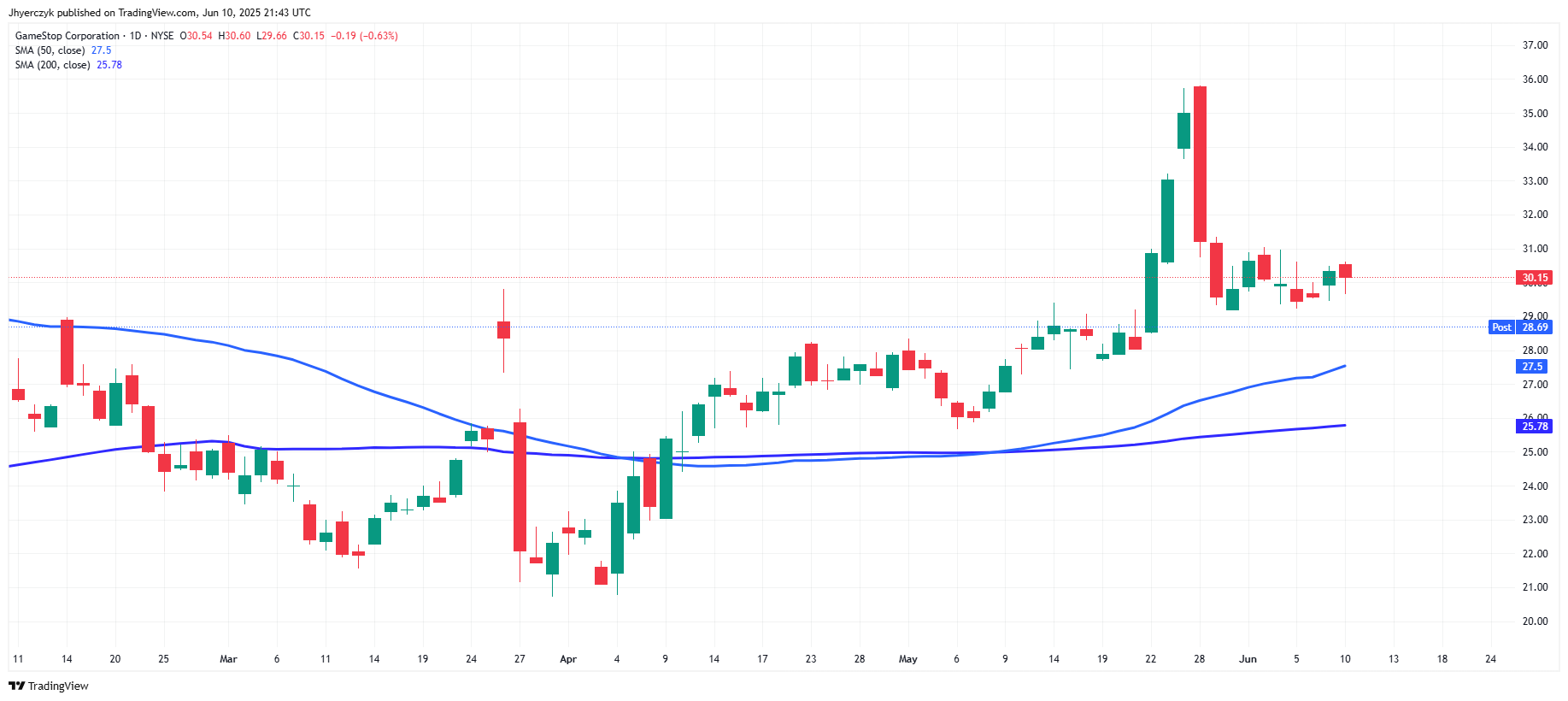GameStop Corporation’s latest quarterly report has sparked renewed market debate. Despite beating earnings expectations, the video game retailer’s revenue came in far below analyst forecasts—triggering a sharp after-hours slide in its stock price. In this post, we explore the key results of Q1, the impact of a steep revenue decline on market sentiment, and the mixed outlook given the company’s ongoing digital pivot.
Revenue Miss Triggers After-Hours Slide
GameStop shares fell more than 4% in after-hours trading following the release of its mixed first-quarter results. Key details include:
- Revenue Drop: Annual revenue dropped 17% to $732.4 million, well short of analyst projections of $754.2 million.
- After-Hours Impact: Trading volume reached 2.4 million shares, with the stock closing at $28.65—a fall of $1.50 or about 4.98%.
- Market Concerns: Despite posting adjusted earnings of $0.17 per share (far exceeding the forecasted $0.04), the weaker top-line performance has raised concerns over the sustainability of its core retail operations.

After-hours trading image depicting GameStop’s share price decline.
Earnings Surprise Versus Steep Revenue Decline
While the earnings beat marks GameStop’s fourth consecutive profitable quarter, the stark contrast between robust adjusted earnings and the significant revenue miss paints a challenging picture:
- Earnings Beat: Adjusted earnings reached $0.17 per share compared to the Wall Street forecast of $0.04.
- Revenue Concerns: The 16.9% year-over-year decline in sales has put the sustainability of the 36% quarterly stock gain into question.
- Profit Turning Around: Net income improved to $44.8 million from a loss of $32.3 million the previous year, signaling a turnaround in profitability yet overshadowed by falling revenue.
Bitcoin Strategy Draws Limited Short-Term Support
GameStop’s foray into cryptocurrency has attracted attention but has yet to deliver noticeable short-term market comfort:
- Stable Crypto Holdings: The company did not add to its bitcoin holdings in Q1 after purchasing 4,710 BTC (worth roughly $516 million at current prices) in May.
- Speculative Pivot: Although the crypto pivot mirrors the strategy of companies like MicroStrategy, the lack of further acquisitions and operational guidance on its digital asset plan has left traders cautious.
- Strong Liquidity: With $6.4 billion in cash, cash equivalents, and marketable securities—up significantly from $1 billion last year—GameStop has a solid liquidity position that supports its speculative strategy but does little to offset core retail sales concerns.
Analyst Sentiment and a Bearish Short-Term Outlook
Despite a notable earnings beat, market analysts remain skeptical:
- Negative Ratings: The sole recommendation on Wall Street is a “strong sell,” with no “buy” or “hold” ratings in sight.
- Price Target: Analysts have set a median 12-month price target at $13.50, well below the current trading levels.
- Focus on Top-Line Performance: The after-hours drop underscores that traders are prioritizing top-line revenue performance over speculative strengths like bitcoin exposure or a strong treasury.
Conclusion
In summary, while GameStop continues to post quarterly profits and bolsters its balance sheet with a strong cash reserve, the substantial revenue miss raises serious questions about the long-term viability of its retail operations. Coupled with a cautious approach to its cryptocurrency strategy and a bearish sentiment among analysts, the current outlook for GameStop suggests that regaining momentum in the near term will be a steep climb.
Tags: #GameStop #EarningsBeat #RevenueMiss #StockMarket #Crypto



